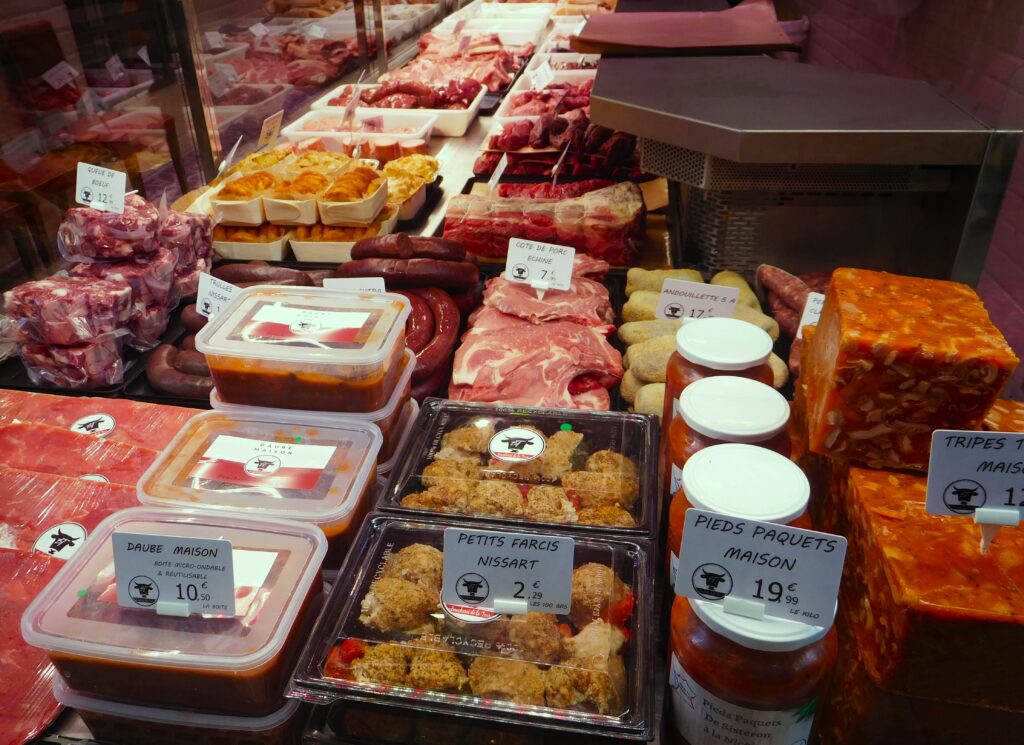
Having just returned from France’s southernmost frontage on the Mediterranean Sea, an area otherwise known as the French Riviera (to English speakers; to the French, it’s the Côte d’Azur), I have Wee Heavy (a.k.a. Scotch Ale) on my mind instead of local Pastis.
As analogies go, this one is a head-scratcher even by my meandering objectives, but stay tuned as I roll forward with it.
First, the Riviera, a vicinity I somehow missed during wandering times of yore when time and effort were constantly expended toward a goal of going places; some might say I never really got anywhere at all, and they may well be right, but at least I’ve managed to visit a great many European locales, which I keep doing for the simplest of all reasons: it makes me feel happy in a way almost nothing else in life does.
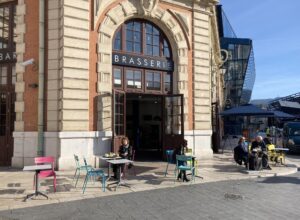
Consequently we spent last week in Nice, a municipality of the French Riviera located on the seafront near Monaco, Cannes, St. Tropez, Antibes, and other charming settlements familiar to James Bond, where land and water meet, affording one the opportunity to linger over an adult libation or three (and those lovely gratis ripe olive nibbles) while considering that as human beings, we have evolved from wriggling worm-like sea creatures, and will be returning to our oceanic points of origin soon enough, assuming the ashes are scattered according to written instructions.
In short, melancholy is acceptable in measured doses, and the crashing of the waves is wonderful music. The weather in Nice was gorgeous save for a single rainy day, and Carnaval provided an amusing backdrop, although rather disappointingly so, given that it isn’t a spontaneous street festival at all, but a carefully curated, gated and ticketed series of flashy events, and a tad too formalized for my blood.
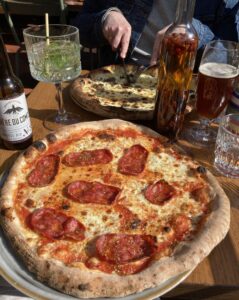
The food in Nice was sublime, exactly as you’d expect anywhere in France, albeit marked by especially mouthwatering examples of pasta and pizza that I’d commonly associate with Italy, hence a significant “I did not recall that” teaching moment.
Nice was the property of the House of Savoy until the time of the American Civil War, when these upwardly mobile regional Italian royals from Torino in the shadow of the Alps swapped it to France in exchange for an escargot to be named later and permission to rule a start-up nation of Italy, which they set out to unify.
In fact, Giuseppe Garibaldi – roughly akin to the George Washington of Italy – was born in 1807 in Italian Nice.
I’m informed this is a beer column, yet allow me to concede that I didn’t go out of my way to look for beer during our time in Nice (French beer was the subject of last week’s column).
Kronenbourg 1664 (lager) and a dumbed-down version of Affligem Abbey Ale were available widely on draft and worked just fine with pizza, spaghetti with seafood, and beef bourguignon. Besides, wine was the general default given our coordinates.
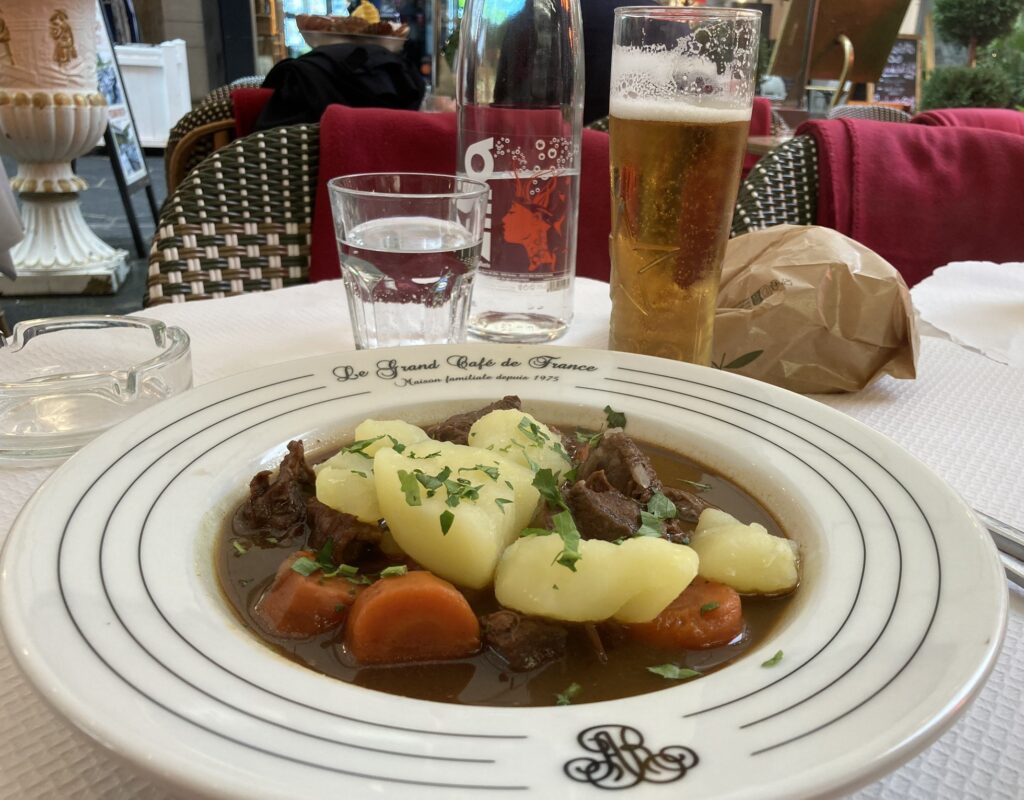
However, I forgot to drink a Negroni, which annoys me; time for another visit to Brooklyn & The Butcher.

Ironically, two newer-age beer businesses in Nice proved to be located on the same block as our hotel.
BrewDog Nice, a chain bar and British brewery taproom, is literally one door down sharing a wall with the hostelry, and it might as well have been the official hotel bar; just a half-block further, 3 Brasseurs is a French chain brewpub founded during the 1980s, with brewing conducted on site and a sizeable food menu that suggests it should be compared with the likes of Rock Bottom or Gordon Biersch in America.
I couldn’t bring myself to patronize BrewDog, even though it was so close to the hotel. We all have our own standards of personal taste and propriety, and although I periodically suspend those of my commandments that abhor chain/franchise/cookie-cutter entities, it’s not as easy to relax a perennial disdain for ticky-tack (defined as crass, vulgar, tasteless or crude) – hence my lingering antipathy toward BrewDog, as my brain is unable to forget the brewery’s “road kill” beer-meets-taxidermy series a few years back, or its lingering multinational problems with human relations in the context of its employees.
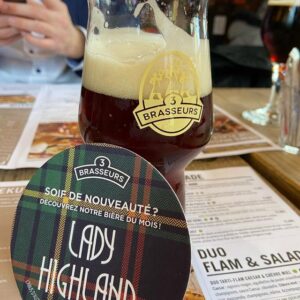
3 Brasseurs struck me very differently, and favorably. I’m glad we got in from the rain and had a couple of beers there, one of which was a rotating seasonal called Lady Highland, reddish-brown-hued and billed as a Wee Heavy, clocking in at 8.2% abv, and nicely balanced for a purposefully hops-deficient malt bomb (photo credit).
This Wee Heavy at a French brewpub on a cool and wet evening stirred primeval memories for me.
Decades ago, before I knew any better, one day I grabbed a six-pack of McEwan’s Scotch Ale from Scoreboard Liquors to take to a midsummer night’s party and found that the complex viscosity was NOT appropriate for sweat-laden volleyball and burnt weenie sandwiches, there being many reasons why Scotch Ale and lawnmowers don’t pair well, with the ale’s sheer heft being most prominent.
But once I understood the intent, a love affair commenced. In the early days of the Public House, we had access to several brands direct from Scotland: McEwan’s, Maclay’s, Orkney Skullsplitter, Broughton Old Jock and a great favorite at the time, the late and lamented MacAndrew’s Scotch Ale (imported by Merchant du Vin).
Rogue Ales made a fine Scotch Ale (McRogue), which I regularly ordered by the keg, although it was discontinued relatively early during our relationship with the brewery.
The Beer Judge Certification Program (BJCP) elaborates:
Also known as “strong Scotch ale,” the term “wee heavy” means “small strong” and traces to the beer that made the term famous, Fowler’s Wee Heavy, a 12 Guinea Ale. Historically, the strongest beer from a Scottish ale parti-gyle … more related to historical brews than modern lower-strength Scottish ales, these beers have their roots in the strong ales of the 1700s and 1800s, although formulations and methods have changed. A premium product, often produced for export. Modern versions have lower starting and finishing gravities than their historical ancestors.
And this (italics mine):
Fermented at cooler temperatures than most ales, and with lower hopping rates, resulting in clean, intense malt flavors. Well suited to the region of origin, with abundant malt and cool fermentation and aging temperature. Hops, which are not native to Scotland and formerly expensive to import, were kept to a minimum.
Say what you like, and many will, but peat smoke character is not a traditional aspect of Wee Heavy, although it is often somehow inferred when drinking commercial examples, and added by home brewers. That’s fine, just not particularly authentic.
For many beer drinkers, a Wee Heavy is for sipping, and best suited to cooler weather, and I agree in large measure, although air conditioning is the great climatic leveler. Are any of Louisville’s breweries making Scotch Ale these days? Let me know, and if you have one, whatever the locale of origin, be sure to raise your glass to Hew Ainslie.
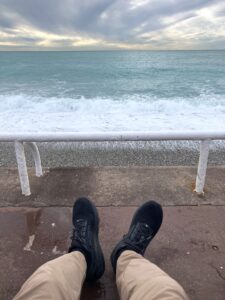
If you don’t know Hew, come back next week and we’ll take a gander at the life of New Albany’s first known brewer, who was a poet and Scots nationalist. What sort of beer did Ainslie brew? We don’t know, exactly, but his story remains interesting and worth retalling.
As for the South of France — the Riviera, the Coast of Azure — well, if it was good enough for the Stones to make Exile on Main Street at the Nellcôte mansion, just a few miles east of Nice, then it’s good enough for me, albeit belatedly.
Find the right boat, and one might sail all the way to Scotland for a Wee Heavy. I’d suggest putting ashore in Spain for ham and cider, but it’s your choice.
—
Previously at Hip Hops:
Hip Hops: Asking for a draft beer in French, while in France



















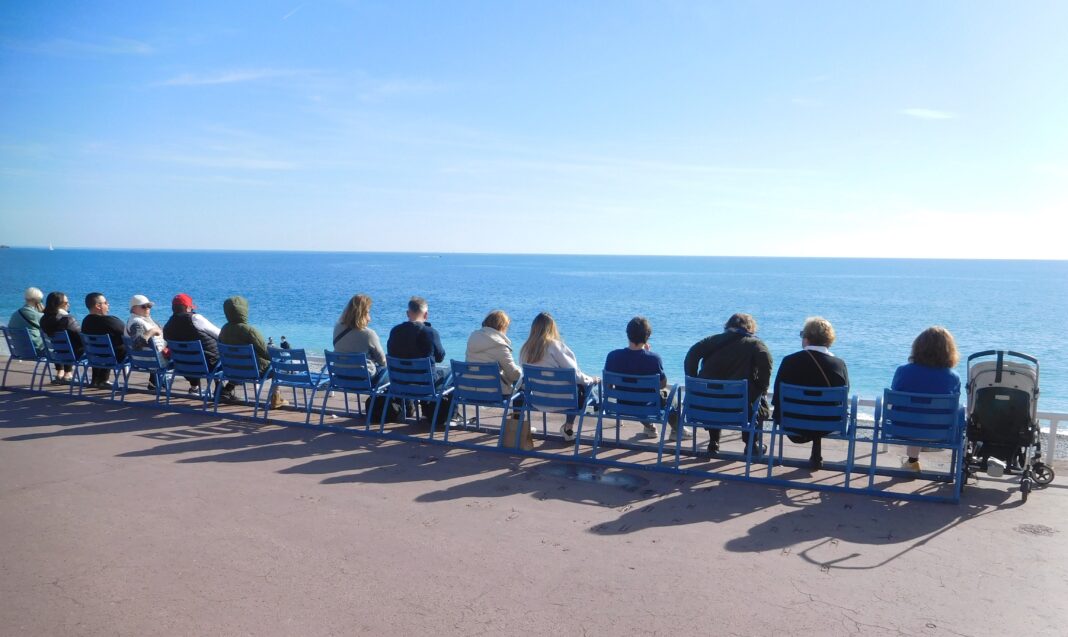
 Roger Baylor is an entrepreneur, educator, and innovator with 42 years of beer business experience in metropolitan Louisville as a bartender, package store clerk, brewery owner, restaurateur, writer, traveler, polemicist, homebrewing club founder, tour operator and all-purpose contrarian.
Roger Baylor is an entrepreneur, educator, and innovator with 42 years of beer business experience in metropolitan Louisville as a bartender, package store clerk, brewery owner, restaurateur, writer, traveler, polemicist, homebrewing club founder, tour operator and all-purpose contrarian.



